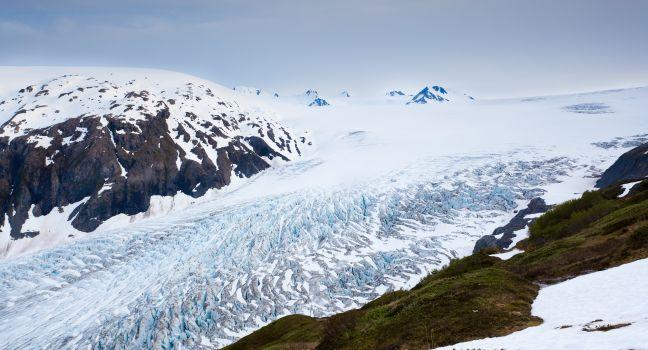Kenai Fjords National Park

Seward is the gateway to the 669,984-acre Kenai Fjords National Park. This is spectacular coastal parkland incised with sheer, dark, slate cliffs rising from the sea, ribboned with white waterfalls, and tufted with deep-green spruce. Kenai Fjords presents a rare opportunity for an up-close view of blue tidewater glaciers as well as some remarkable ocean wildlife. If you take a day trip on a tour boat out of Seward, it's highly likely you'll see frolicking sea otters, crowds of Steller sea lions lazing on the rocky shelves along the shore, a porpoise or two, bald eagles, and tens of thousands of seabirds. Humpback whales and orcas are sighted occasionally, and mountain goats wander the seaside cliffs. The park's coastal fjords are a favorite of sea kayakers, who can camp or stay in reserved public-use cabins. One of the park's chief attractions is Exit Glacier, which can be reached only by the one road that passes into Kenai Fjords. Trails inside the park lead to an overlook of the vast Harding Icefield. Named for President Warren G. Harding, this area has more than three-dozen glaciers flowing from it. Backcountry travelers should also be aware that some of the park's coastline has been claimed by local Native organizations and is now private property. Check with park headquarters to avoid trespassing on Native land.



